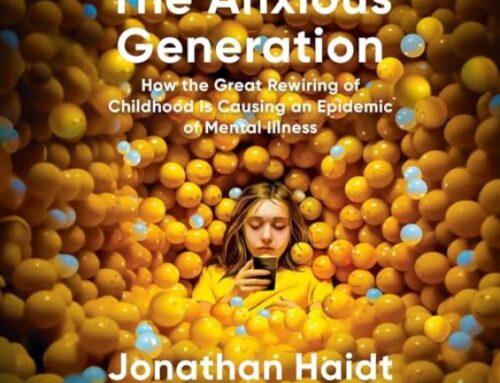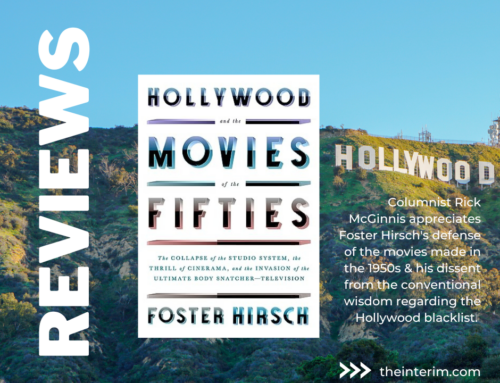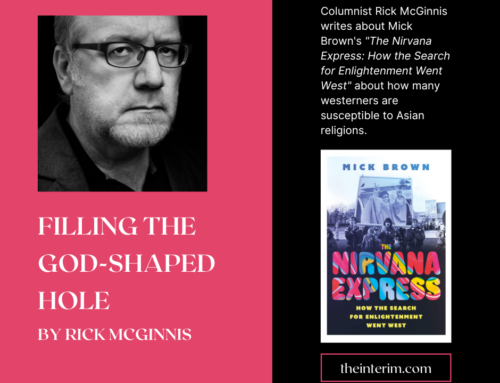Maybe it’s some remnant of our tribal past, but it’s hard for us to leave behind some impulse to fear and vilify whoever lives one village over, beyond the river or in the next valley. We might think we’re sophisticated, cosmopolitan people, but this nascent tribalism is never far from the surface, and I saw it re-emerge with a roar during recent municipal elections here in Toronto.
Back when the late Rob Ford won his surprise mayoral victory in 2010 – certainly a surprise for his opponents, who couldn’t imagine how decisively he’d win – the electoral post-mortems painted his triumph as the revenge of the suburbs that once comprised a group of independent townships over the downtown, Toronto’s older urban core.
It was a battle between the suburbs and the city, won this time by the suburbs, who rallied behind various standards – summed up in the media as a love of cars, ethnic and cultural homogeneity and lower property taxes. As with any history written by the losers – the media, for the most part, who identified as urbanite, not suburbanite – it relied on conveniently ignoring facts that didn’t fit, and the deployment of sweeping generalizations, many of them out of date – if they were ever true at all – by decades.
The suburb is two centuries old, and took shape around cities like London, England, where a middle class growing in power and prosperity decided it didn’t want to live near the mills, docks, factories, warehouses, banks and counting houses where they made their money. But the suburb as we know it today came into being in the United States after World War II, with its heartland in the former farms and fields of Long Island, in privately planned communities like Levittown.
Even before it coalesced in the mass-produced houses of Levittown, the suburb had its enemies, eager to denounce it as a cultural wasteland, an engine of conformity and a hot-house for complacency and stagnation. These criticisms weren’t new, and had actually been leveled at small towns long before the windows and doors on the first ranch style or Cape Cod home had been installed.
Urbanists like the critic Lewis Mumford and novelists such as Sinclair Lewis had small-town life squarely in their sights, painting it as an embodiment of provincialism at its worst. In novels like Main Street and Babbit, Lewis depicted a self-satisfied and small-minded middle class walled up in comfort behind parochial thinking and bourgeois consumerism. The word “Babbitry” was coined to describe this mindset, and became as popular an epithet as H.L. Mencken’s disdainful jeremiads against the herd-like “booboisie.”
Postwar critics of the suburbs simply shifted their opprobrium on to a new target, and sociology bestsellers like The Organization Man and The Lonely Crowd depicted the suburbs as lonely, soulless places rife with status anxiety. One particularly vicious attack, John Keats’ The Crack in the Picture Window, looked pityingly on first time homeowners desperate for “a box of your own in one of the fresh-air slums we’re building around the edges of American cities…inhabited by people whose age, income, number of children, problems, habits, conversations, dress, possessions, perhaps even blood types are almost precisely like yours.”
In pop culture this suburbaphobia found a place on the Billboard charts with Malvina Reynolds’ folk song “Little Boxes,” which was a hit for Pete Seeger in 1963. Over a tedious nursery rhyme melody, Reynolds and Seeger sang disapprovingly about suburban tract housing full of little houses “all made out of ticky tacky” that “all just look the same.” Quoting these lyrics or covering the tune became essential to expressing disapproval of suburbia, whether you were looking down your nose from a city walk-up apartment or some muddy communal farm. It is an anthem of breathtaking sanctimony.
In their 2000 book Picture Windows: How the Suburbs Happened, authors Rosalyn Baxandall and Elizabeth Ewen note how these books were especially harsh on suburban wives and mothers, blaming them for “everything from juvenile delinquency to keeping up with the Joneses to producing a generation of morally inferior sons and Milquetoast husbands.”
Ironically, feminist authors such as Betty Friedan and Marilyn French would borrow heavily from these implicitly misogynist sentiments for books like The Feminine Mystique and The Women’s Room to argue for the emancipation of their generation of women from suburban oppression, of lives wasted in the dismal company of…other suburban women.
Another disturbing trend attributed to the suburbs was the fostering of a potentially new manifestation of that great American myth, always glimpsed but never achieved – the classless society. Ewen and Baxandall quote a 1953 article in Harper’s describing new suburbs like Levittown with an anthropologist’s keen eye: “Socially these communities have neither history, tradition nor established structure, no inherited customs, institutions, socially important families or big houses, everybody lives in a good neighbourhood: there is to use a classic American euphemism no wrong side of the tracks.”
People in the suburbs were living more casually than before, in a place where “the formal dining room gave way to the barbecue and the TV dinner. Where white gloves gave way to pedal pushers.”
Ewen and Baxandall note that television was one way that these new, classless Americans learned to live in suburbia – an amenity that was offered in new Levitt homes after 1950. Nearly sixty years later, the Brookings Institute released a study on how the suburbs have been treated on the small box over time, noting at the outset that not only do Americans not move as much as they used to, but that “popular culture is one channel through which Americans might develop negative expectations of other places.”
In figures drawn from nearly six decades, the study found that the settings of TV shows have become steadily more urban, that dramas tend to feature urban locations while comedies are set in suburban and small town locations, and that while urban and suburban settings usually feature real life locations, small towns are more often fictionalized.
Southerners and those living in the “flyover” or “red states” in the middle of the country are conspicuously underrepresented, while New York and Los Angeles are overrepresented – they’re the setting of nearly 30 per cent of shows despite hosting just 7 per cent of the population. The latter isn’t surprising, really – the creators of these shows either live or work in these entertainment capitals, and much as Americans don’t like to move, neither do writers, producers, directors or actors, either in real life or in their imagination. Interestingly, it’s only reality TV that has addressed this geographic imbalance, setting its shows in those non-coastal “middle places” that dramas and comedies tend to avoid.
The Brookings study strives to make its point, roping in quite a few fat generalizations along the way to argue that Hollywood should aim for more geographic diversity along with its more high profile crusades for racial, gender and sexual diversity on screen.
You don’t need a study to know how positive depictions of suburban life featured in TV shows from the ‘50s and ‘60s – the wholesome suburban family communities in shows like Father Knows Best, Leave it to Beaver, My Three Sons, Ozzie and Harriet and Rob and Laura Petrie’s New Rochelle, NY home in The Dick Van Dyke Show – have become rare, even inconceivable. Never mind that wholesome, gentle comedy has become a frequently satirized museum piece – the suburbs are more likely today to be a place of murderous secrets (Desperate Housewives,) family dysfunction (Married With Children) or sinister supernatural happenings (Buffy The Vampire Slayer.)
We don’t know what to think about the suburbs any more – if we ever did. When it comes time to vilify them – as when you’ve been handed a sharp electoral defeat based on what looks like simple demography – it’s useful to depict the suburbs as bland, conformist, and monolithic, a voting bloc devoted to defeating your forward-thinking, cosmopolitan agendas.
But that doesn’t hold up, most pointedly in the sorts of texts that urbanists love to cite when celebrating the renewal of cities, like Richard Florida’s odes to the transformative powers of the “creative classes” in formerly moribund inner cities, or treatises with titles like The Triumph of the City or The Great Inversion and the Future of the American City. These recent books tell the story of the renewal of downtowns once emptied out by suburbanization and “white flight,” of former tenements filled with young people in renovated apartments, and empty lofts and warehouses transformed into high-priced condos with a view of the skyline.
In this narrative, the suburb is the loser, a place that you leave if you’re ambitious or creative. It’s the modern city, where marginal people are pushed out of the downtown core, along with poor people, immigrants and minorities unable to pay for high rents or expensive coffees, forced to move into the now well-worn housing developments being vacated by the children of the suburb’s postwar pioneers.
It’s a confusing picture. Either the suburbs are intent on defending a dated status quo set in place during the postwar years – one presumed to be ethnically lily white, or at least programmed to uphold white privilege – or, it’s a reactionary place, on the road to becoming as dangerous as the empty cities and tenement blocks once were; a sprawling horizontal slum with lawns and parkways, resentful of the loss of jobs, their declining schools, the arrogance of urban elites intent on hoarding resources and forcing plans on them from above.
It’s actually neither, mostly because there’s no one sort of suburb, not anymore. Some suburbs are coalescing around towers and main streets and developing their own urbanities; some have blue chip status, with top-rated schools and homes that start bidding wars; others are attracting their own creative classes thanks to the cheap rents and empty industrial facilities that have disappeared in revived cities.
Even in the ur-suburbs of Long Island and elsewhere, in places like Levittown, two or three generations of homeowners have home-improved their little boxes made of ticky-tacky into colours and shapes their builders (and folk singing critics) couldn’t have imagined. There is also a Levittown Historical Society, and burgeoning arguments that subdevelopments like Levittown are worthy of architectural preservation.
Up here in Ontario, the imminent provincial election means that the suburbs versus city scenario will be revived, to either apportion blame should Progressive Conservative leader Doug Ford become premier, or get unpacked if he loses and the boogeyman of a monolithic voting bloc needs to be triumphantly debunked.
There remains the small matter that Ford Nation events – held inevitably in the suburbs since the heyday of Doug’s brother Rob – are visibly far more diverse than, say, the average Liberal fundraiser, and Ford opponents have been chewing on that tough gristle for nearly a decade.
Obviously, the suburbs can’t be both a politically, economically and culturally monolithic place, and a diverse, complex collection of communities mysteriously moved to unite during election cycles to oppose the prerogatives of certain political parties and the urbanites who love them. There’s a very complex story about the suburbs dying to be told, but we’re still invested in stereotypes that are decades out-of-date for the purposes of situational political utility. It’s an object lesson that politics, more than anything else, is the enemy of truth.
Diversity has joined “marriage,” “rights,” “privilege” and “family” on that list of words that we’ve come to use without sharing a common meaning, especially when we talk about places like the suburbs, what have come to mean something very different in our imaginations than they exist in reality. For the people living there – whose lived experience has nothing to do with convenient fictions – the suburbs are really just a place where a mortgage might be affordable, where you can have a front and a back yard, and where you don’t share walls with your neighbours.





